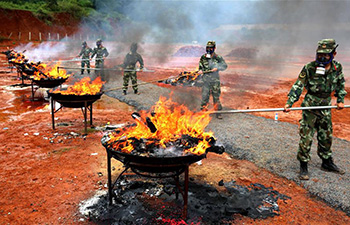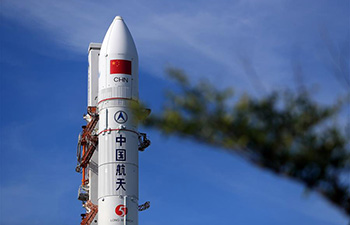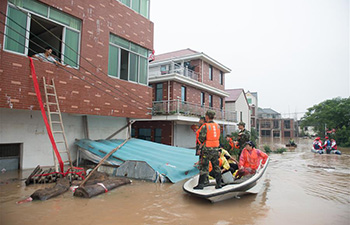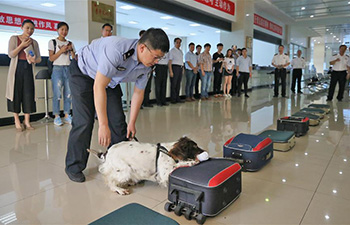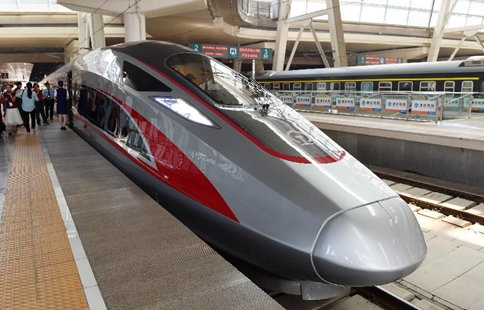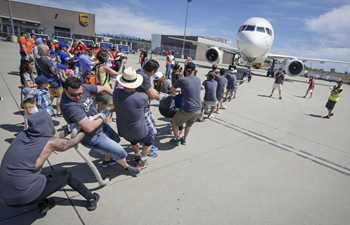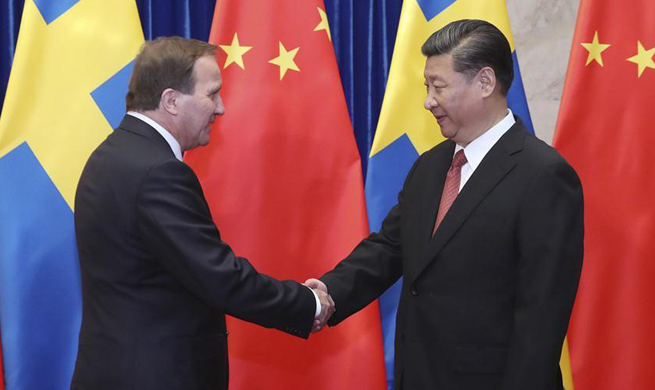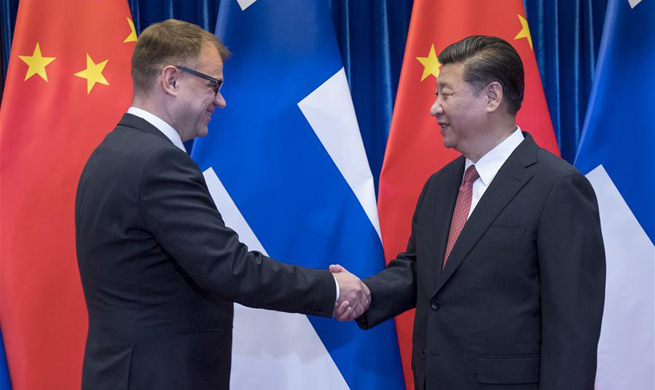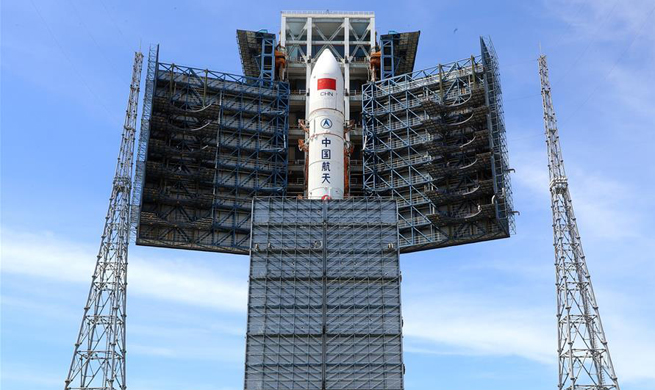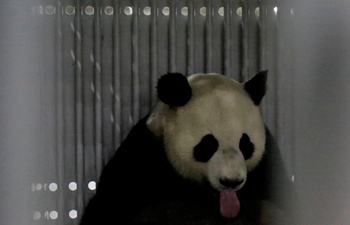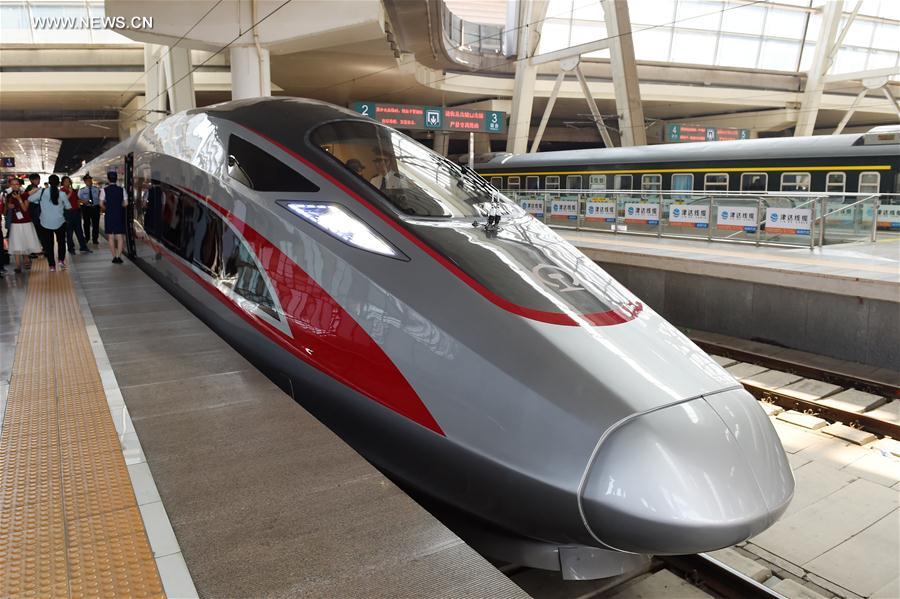
Photo taken on June 26, 2017 shows the China's new bullet train "Fuxing" at Beijing South Railway Station in Beijing, capital of China. China's next generation bullet train "Fuxing" debuted on the Beijing-Shanghai line on Monday. A CR400AF model departed Beijing South Railway Station at 11:05 a.m. for Shanghai. At the same time, the CR400BF model left Shanghai Hongqiao Railway Station for Beijing. The new bullet trains, also known as electric multiple units (EMU), boast top speeds of 400 kilometers an hour and a consistent speed of 350 kilometers an hour. (Xinhua/Ju Huanzong)
BEIJING, June 26 (Xinhua) -- China's next generation bullet train, "Fuxing," ran for the first time on the Beijing-Shanghai line on Monday.
CR400AF departed Beijing South Station at 11:05 a.m. for Shanghai, while, at exactly the same time, CR400BF left Shanghai Hongqiao Station bound for Beijing.
Beijing-Shanghai line is China's busiest route, used by more than half a million passengers each day.
The new bullet trains -- electric multiple units (EMU) -- can hit 400 kilometers an hour and maintain a constant speed of 350 kilometers an hour.
The train includes a monitoring system that automatically slows the train in case of emergency or abnormal conditions. Telemetry allows a control center to monitor the train in real time.
"Fuxing" (rejuvenation) in a substantial upgrade on "Hexiehao" (harmony). "Fuxing" is more spacious and energy-efficient, with a longer life expectancy and better reliability.
"The train was entirely designed and manufactured in China. We hold the complete intellectual property rights," said Lu Dongfu, general manager of China Railway Corp., operator of the new train.
China began working on EMU trains in 2012 and in 2015, the first EMU hit 385 km per hour. In July 2016, two EMU trains travelling at 420 km per hour passed each other in opposite directions on parallel tracks.
"High-speed train technology has become wholly indigenous," said He Huawu, chief engineer of China Railway Corp.
China has the world's longest high-speed rail network, 22,000 kilometers at the end of last year, about 60 percent of the world's total. Chinese bullet trains have been bought by Indonesia, Russia, Iran and India.
He Huawu said "Fuxing" will be China's prime high-speed exports in the future. The model can be adapted to various geological and operational situations, including extreme climate, a core competitive strength in the global market.
A high-speed link between Indonesian capital Jakarta and nearby Bandung was the first full-package overseas deal for China's high-speed trains, using Chinese technical standards, surveys, design, construction, equipment and personnel training.
Chinese companies are now actively seeking deals in Malaysia and Singapore, Mongolia, the United Kingdom, the United States and across Africa.
China will soon test driverless trains on the Beijing-Zhangjiakou line and carry out more further experiments on maglev trains, He added. Enditem




